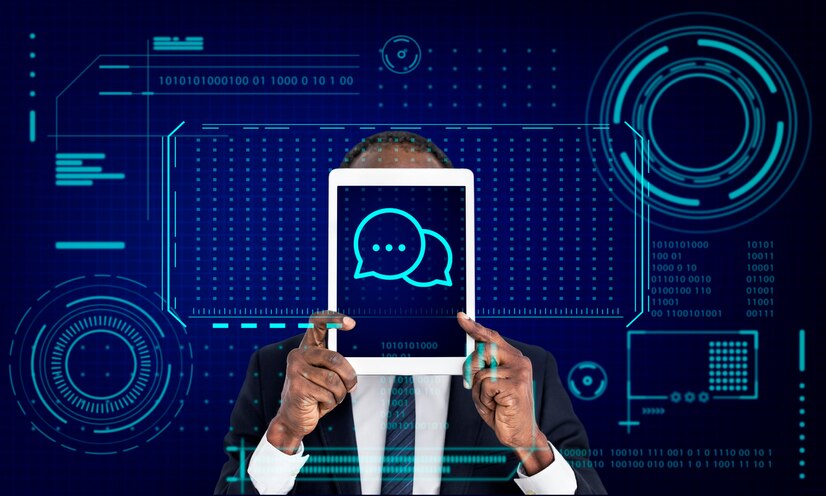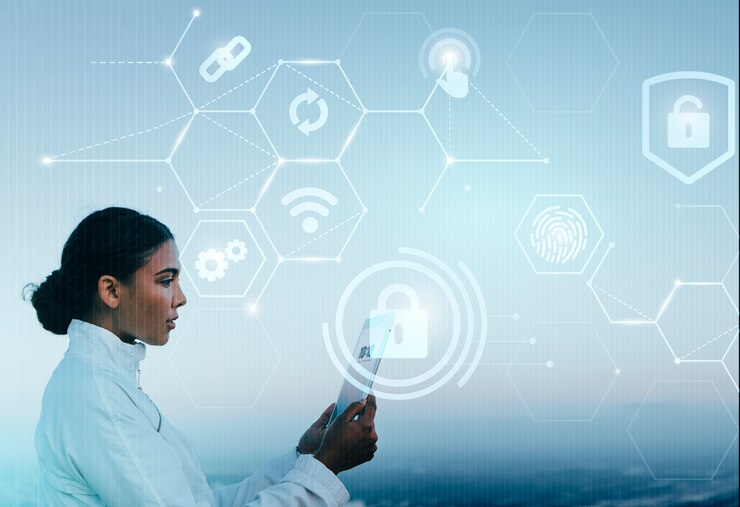The 7 biometric characteristics are fingerprint, iris, voice, face, hand geometry, vein pattern, and DNA. Biometric characteristics are unique physical or behavioral traits used for identification and authentication.
In modern technology, biometrics play a crucial role in providing security and convenience in various industries such as banking, healthcare, and law enforcement. Biometric characteristics are distinct individual traits that are used to identify or verify a person’s identity. These features include fingerprints, which are unique to each individual; iris patterns, which are the colored part of the eye; voiceprints, which capture vocal characteristics; facial recognition, which uses distinct facial features; hand geometry, which measures the shape of the hand; vein patterns, which are unique to each individual; and DNA, which holds a person’s genetic code.
These characteristics are increasingly being utilized for secure access control, time and attendance tracking, and identity verification in various industries.
Understanding Biometric Characteristics
Biometric characteristics are unique physical features used for identification and security purposes. The seven main biometric characteristics are fingerprint, face recognition, iris recognition, voice recognition, hand geometry, vein recognition, and signature dynamics. These biometric traits are used for authentication and access control in various systems.
Definition Of Biometric Characteristics
Biometric characteristics refer to the unique physical or behavioral traits that can be used to identify individuals. These traits are distinctive to each person and are often used in identity verification and security systems.
Importance Of Biometric Characteristics In Identity Verification
Biometric characteristics play a crucial role in identity verification processes as they are difficult to replicate or forge. By utilizing these unique traits, organizations and security systems can accurately verify and authenticate an individual’s identity, thus enhancing security and fraud prevention.
Relevance Of 7 Biometric Characteristics In Security Systems
In modern security systems, the adoption of the 7 key biometric characteristics – fingerprint, iris, voice, face, hand geometry, vein, and ear recognition – has proven to be highly effective. These biometric traits provide robust and reliable identification, contributing to enhanced security measures and accurate access control.
7 Biometric Characteristics Explained
As technology continues to advance, biometric characteristics are becoming an increasingly popular method of security and identification. There are 7 primary biometric characteristics that are commonly used for authentication and identification purposes. Let’s delve into each of these 7 biometric characteristics and understand how they work.
Fingerprint Recognition
Fingerprint recognition is one of the oldest and most widely recognized biometric characteristics. It involves capturing and analyzing the unique patterns of ridges and valleys present on an individual’s fingertips. This method is widely used in smartphones, access control systems, and law enforcement agencies.
Facial Recognition
Facial recognition technology uses an individual’s facial features, such as the distances between the eyes, nose, and mouth, to identify and authenticate them. It is commonly used in surveillance systems, public safety, and mobile device security.
Iris Recognition
Iris recognition is a highly secure biometric characteristic that involves analyzing the unique patterns of an individual’s iris. This method is used in high-security environments such as border control, airport security, and restricted access areas.
Voice Recognition
Voice recognition technology analyzes an individual’s speech patterns and voice characteristics to verify their identity. It is commonly used in telephone banking, voice-controlled devices, and authentication systems.
Hand Geometry
Hand geometry recognition measures and analyzes the physical structure of an individual’s hand, including the size and shape of their fingers and the length of their hand. This method is often used in time and attendance systems and physical access control.
Retina Recognition
Retina recognition involves capturing and analyzing the unique patterns of an individual’s retina blood vessels. This biometric characteristic is used in high-security environments such as government institutions, research facilities, and military installations.
Gait Recognition
Gait recognition technology identifies individuals based on their walking patterns and styles. It is used in surveillance and security systems to track and detect individuals based on their unique gait.
Advantages Of Utilizing Biometric Characteristics
Utilizing biometric characteristics offers a range of advantages that enhance security measures, reduce susceptibility to fraudulent activities, and eliminate unauthorized access. This innovative technology provides a reliable and seamless way to confirm and validate a person’s identity, leading to improved security and user experience across various applications.
Enhanced Security Measures
Biometric characteristics, such as fingerprint and facial recognition, provide enhanced security measures by offering unique and non-replicable identifiers for individual authentication. This significantly reduces the risk of unauthorized access and identity theft, ensuring that only authorized individuals have access to sensitive information and secure areas.
Less Susceptibility To Fraudulent Activities
Utilizing biometric characteristics decreases the susceptibility to fraudulent activities, as these identifiers are difficult to replicate or forge. By leveraging traits like iris patterns, voiceprints, and DNA, organizations can mitigate the risk of unauthorized individuals attempting to bypass security measures through deception or impersonation.
Elimination Of Unauthorized Access
Biometric characteristics play a pivotal role in eliminating unauthorized access by providing a robust and reliable method of identification. This helps in preventing unauthorized entry into restricted areas, unauthorized use of devices, and unauthorized access to digital resources, enhancing overall security and control over access permissions.

Applications Of Biometric Characteristics
Biometric characteristics, unique physical and behavioral traits of
individuals, have extensive applications in various sectors. These
characteristics serve as reliable markers for identity verification and
authentication, leading to their widespread use in security systems,
attendance tracking, and mobile device authorization.
Security Systems In Government Institutions
Biometric characteristics play a crucial role in enhancing security
measures within government institutions. By utilizing biometric
technologies such as fingerprint recognition and facial scans, government
bodies can control access to sensitive areas and ensure only authorized
personnel are granted entry.
Biometric Attendance Systems In Corporate Environments
In corporate settings, biometric characteristics offer a convenient
and foolproof method for recording employee attendance. Biometric
attendance systems, leveraging fingerprints, iris scans, or facial
recognition, eliminate the possibility of proxy attendance and provide
accurate time tracking for payroll purposes.
Biometric Authentication In Mobile Devices
In the realm of mobile devices, biometric characteristics are harnessed
to ensure secure and seamless user authentication. With features like
fingerprint sensors and facial recognition integrated into smartphones and
tablets, users can safeguard their devices and sensitive data with
personalized biometric authentication.
Future Of Biometric Characteristics
In the rapidly evolving landscape of technology, biometric characteristics are paving the way for advancements that are redefining security and authentication. These unique physical and behavioral traits have the potential to revolutionize various industries, from healthcare to finance and beyond. As we delve into the future of biometric characteristics, it’s crucial to explore the advancements, potential challenges, ethical considerations, as well as their integration with artificial intelligence.
Advancements In Biometric Technology
Biometric technology is witnessing remarkable advancements, pushing beyond traditional fingerprint and facial recognition. The development of more sophisticated systems aims to incorporate additional biometric characteristics such as iris patterns, voice recognition, gait analysis, and even DNA-based traits. These advancements not only enhance security but also improve user experience by offering seamless and reliable authentication methods.
Potential Challenges And Ethical Considerations
As biometric characteristics continue to gain traction, concerns surrounding privacy, data security, and consent are brought to the forefront. Potential challenges encompass ensuring the protection of sensitive biometric data, addressing algorithm bias, and safeguarding against unauthorized access. Moreover, ethical considerations arise in the ethical collection, storage, and usage of biometric information, necessitating robust regulations and ethical frameworks to mitigate potential risks and implications.
Integration With Artificial Intelligence
Integration of biometric characteristics with artificial intelligence (AI) presents an exciting prospect for the future. AI algorithms can significantly enhance the accuracy and efficiency of biometric identification systems, contributing to rapid and reliable authentication processes. Furthermore, the synergy of biometric technology with AI opens doors to innovative applications across industries, empowering organizations to leverage biometric data for personalized services and enhanced security measures.
Frequently Asked Questions For What Are 7 Biometric Characteristics?
What Is Biometric Class 7?
Biometric class 7 refers to the highest level of security and accuracy in biometric systems, often used for sensitive applications. It includes advanced features like live finger detection and liveness detection to prevent spoofing attacks.
What Are The List Of Biometric Features?
Biometric features include fingerprints, facial recognition, iris scanning, voice recognition, and hand geometry. These features are unique to individuals and are used for identity verification and access control.
What Are The 5 Biometrics?
The 5 biometrics are fingerprint, facial recognition, iris scan, voice recognition, and hand geometry. These methods are used for identifying individuals based on their unique physical characteristics.
What Are The 3 Types Of Biometric Examples?
The three types of biometric examples include fingerprint recognition, facial recognition, and iris scanning. These technologies use unique physical traits for identification and security purposes.
Conclusion
Biometric characteristics provide a secure and efficient means of identifying individuals based on unique physical and behavioral traits. From fingerprints and hand geometry to iris scanning and facial recognition, the use of biometrics continues to evolve with advancements in technology.
This blog has shed light on 7 key biometric characteristics, showcasing their significance in various applications.
